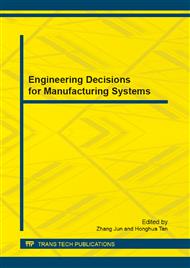p.91
p.95
p.100
p.106
p.112
p.118
p.122
p.127
p.132
Importance of the Meshing Accuracy for Stress Evaluation in All-Ceramic Restored Teeth
Abstract:
The fracture resistance of all-ceramic restorations is one of the major concerns in clinical applications of these materials. An in vitro study can help to estimate the in vivo behavior of a new dental material and design method. The FEM (finite element method) seems to be a proper tool to study material behavior in relation to their composition, relationship and geometry, by analyzing the distribution of stress. The purpose of this study was to evaluate, by finite element analysis, the importance of meshing accuracy on stresses induced in all-ceramic restored teeth during protrusion loading. For the experimental analysis, a 3D model of a central incisor was achieved: intact teeth, unrestored teeth with chamfer marginal preparation, the same tooth restored with full pressed ceramic crown. Stress analysis was performed on the restored incisor during protrusion. To evaluate the importance of the meshing accuracy for stresses in all-ceramic restored teeth three kinds of meshing options were chosen: coarse, medium and fine. For the analysis choosing of the proper meshing options is essential for accurate results. The medium meshing is enough to obtain favorable results.
Info:
Periodical:
Pages:
112-117
Citation:
Online since:
September 2013
Authors:
Keywords:
Price:
Сopyright:
© 2013 Trans Tech Publications Ltd. All Rights Reserved
Share:
Citation:


